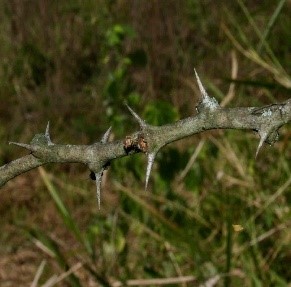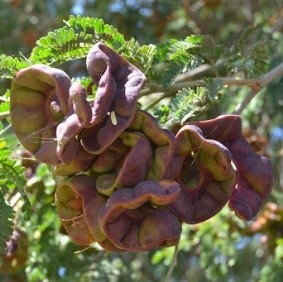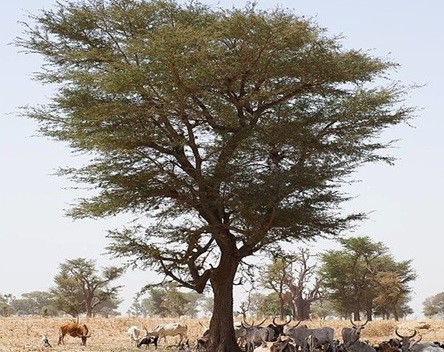Trees
Acacia albida Del
Acacia albida Del
Description :
A
small to large, deciduous tree, 6 to 30 in in height with a spreading crown. The
leaves are compound. The bark is rough, greenish grey to dark brown. The
flowers are in bunches 3.5 to 14 cm long. Flowering occurs between February and
April. The pads are 6 to 25 cm long and 2 to 5 cm wide. The pods mature between
March and May. It is easily reproduced from seed or by vegetative means. Seed
stores for at least 12 months treated with insecticides and sealed in airtight
drums. It has a fairly rapid growth rate but does not take the form of a tree
for several years. A MAI of 2 to 3 m3 /ha/yr has been recorded. Wood
is soft, with a specific gravity of 0.59 and a calorific value of 4910 kcal/kg.
Wood is light or whitish grey having smooth grains and not very strong.
Distribution :
The
tree is native to tropical and subtropical Africa. In Pakistan it is planted
along the Kurram Garhi Canal and in botanical and research gardens. It is an
intolerant, drought hardy tree that is really adaptable and will grow on a
variety of coarse textured soils that are well drained. It requires
precipitation of 250 to 400 mm; it will grow in zones of less rainfall along riverbanks
or where there is a shallow water table. It will grow in arid subtropical to
tropical areas up to 2400 m. It has a temperature range of -5 to 45°C, which
indicates some frost hardiness. At present no disease or insects problems have
been identified. USES: This is a very useful tree in arid areas of
Pakistan. Ideally suited for planting along riverbanks and canals. In Africa,
it is reported to shed its leaves in the wet seasons and provide fodder during
the dry period. This characteristic, along with its ability to fix nitrogen
makes it a good farm forestry tree. Also used as Fodder, fuel, and
timber (construction, boat building).
Uses :



